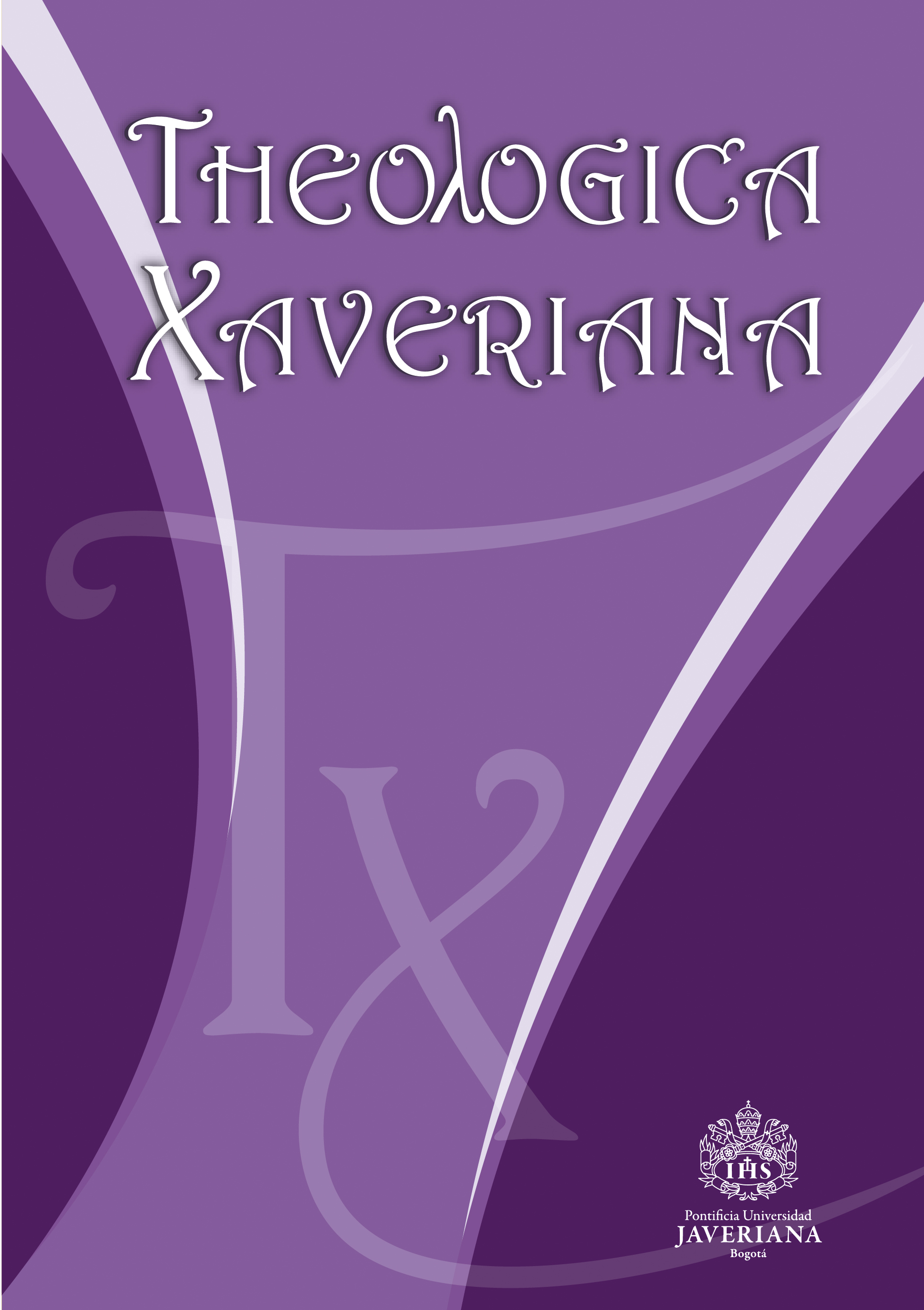Abstract
The concept “poor Church for the poor”, proposed by Pope Francis in keeping with the spirit of Vatican II, places poverty at the center of the current theological debate as a path to reform the established Church. In this context, the objective of the research is to broaden the horizon of reflection by reviewing the relationship between poverty and reform in the twelfth and thirteenth centuries, based on the analysis of various writings that Marie-Dominique Chenu (1895-1990) dedicates to this subject. His research takes on new topicality as it demonstrates the connection between poverty and reform in medieval Christianity and in that of all times.
Chenu, Marie-Dominique. “Consistencia jurídica de la pobreza constituida como estado de vida”. En El Evangelio en el tiempo, por Marie-Dominique Chenu, 393-397. Barcelona: Estela, 1966.
_____. “Contestazione senza scisma nella Chiesa medievale”. Concilium 9 (1973): 71-82.
_____. “El fin de la era constantiniana”. En El Evangelio en el tiempo, por Marie-Dominique Chenu, 13-31. Barcelona: Estela, 1966.
_____. “Fenomeni di contestazione nella storia della Chiesa”. Concilium 7, 8 (1971): 129-137.
_____. Hacia una teología del trabajo. Vol. 1. Traducido por Juan Misser Vallés. Barcelona: Estela, 1960.
_____. La “doctrine sociale” de l’Église comme idéologie. Paris: Du Cerf, 1979.
_____. ‘“La Iglesia de los pobres’ en el Vaticano II”. Concilium 124 (1977): 73-79.
_____. “La paura delle utopie”. Humanitas 23 (1968): 957-960.
_____. “La pauvreté mendiante: Saint Dominique”. En Problèmes de la religieuse d’aujourd’hui: La pauvreté, 61-70. Paris: Du Cerf, 1952.
_____. “Laicos en tiempo de cristiandad”. En El Evangelio en el tiempo, por Marie-Dominique Chenu, 67-77. Barcelona: Estela, 1966.
_____. “Paradoja de la pobreza evangélica y construcción del mundo”. En El Evangelio en el tiempo, por Marie-Dominique Chenu, 377-391. Barcelona: Estela, 1966.
_____. “Reformas de estructura en la cristiandad”. En El Evangelio en el tiempo, por Marie-Dominique Chenu, 33-49. Barcelona: Estela, 1966.
_____. “Une école de théologie: le Saulchoir”. En Une école de théologie: Le Saulchoir, por J.-D. Chenu, 93-176. Paris: Du Cerf, 1985.
Condini, Martinho. Monseñor Hélder Câmara, un ejemplo de esperanza. Bogotá: San Pablo, 2014.
Congar, Yves. Diario del Concilio (Segunda sesión). Vol. 1. Traducido por María Teresa Bial y Massons. Barcelona: Estela, 1964.
_____. Pour une Église servante et pauvre. Paris: Du Cerf, 1963.
Fesquet, Henri. Diario del Concilio. Vol. 1. Barcelona: Nova Terra, 1967.
Francisco. “Discurso en el encuentro con los representantes de los medios de comunicación (16 de marzo de 2013”. Vatican, http://w2.vatican.va/content/francesco/es/speeches/2013/march/documents/papa-francesco_20130316_rappresentanti-media.html (consultado el 9 de enero de 2018).
Gauthier, Paul. Los pobres, Jesús, y la Iglesia. Vol. 2. Traducido por León Sansegundo. Barcelona: Estela, 1965.
Gerosa, Guido. “Leone XIII, le sue encicliche hanno fatto la storia”. En I Papi (I grandi nomi del XX secolo N.o 11), editado por el Istituto Geografico de Agostini, 17-33. Novara: Istituto Geografico de Agostini, 1974.
González Moralejo, Rafael. El Vaticano II en taquigrafía. Madrid: Biblioteca de Autores Cristianos, 2000.
Juan XXIII. “Radiomensaje un mes antes de la apertura del Concilio Vaticano II (11 de septiembre de 1962)”. Vatican, http://w2.vatican.va/content/john-xxiii/it/messages/pont_messages/1962/documents/hf_j-xxiii_mes_19620911_ecumenical-council.html (consultado el 5 de enero de 2018).
Pikaza, Xavier (dir.). El pacto de las catacumbas. Estella (Navarra): Verbo Divino, 2015.
Politi, Marco. Francisco entre lobos. Buenos Aires: Fondo de Cultura Económica, 2015.
This journal is registered under a Creative Commons Attribution 4.0 International Public License. Thus, this work may be reproduced, distributed, and publicly shared in digital format, as long as the names of the authors and Pontificia Universidad Javeriana are acknowledged. Others are allowed to quote, adapt, transform, auto-archive, republish, and create based on this material, for any purpose (even commercial ones), provided the authorship is duly acknowledged, a link to the original work is provided, and it is specified if changes have been made. Pontificia Universidad Javeriana does not hold the rights of published works and the authors are solely responsible for the contents of their works; they keep the moral, intellectual, privacy, and publicity rights.
Approving the intervention of the work (review, copy-editing, translation, layout) and the following outreach, are granted through an use license and not through an assignment of rights. This means the journal and Pontificia Universidad Javeriana cannot be held responsible for any ethical malpractice by the authors. As a consequence of the protection granted by the use license, the journal is not required to publish recantations or modify information already published, unless the errata stems from the editorial management process. Publishing contents in this journal does not generate royalties for contributors.



